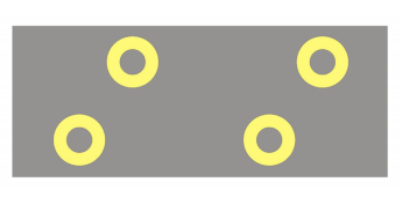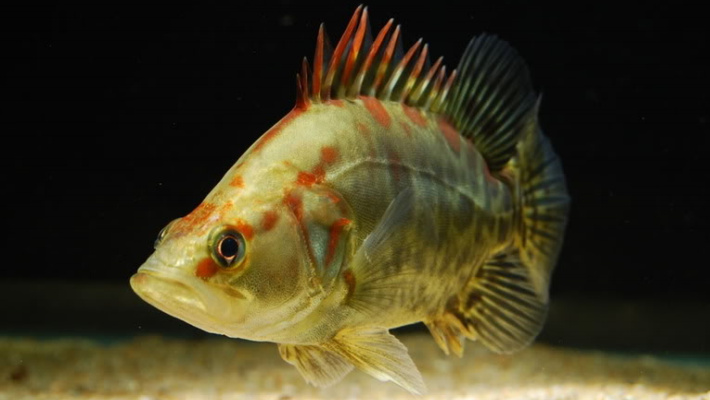|
Attractive
visual spots play an important role in defensive, feeding, agonistic,
courtship, parental and other visually guided behavioural responses in fish
(for review, see Price et al., 2008) as well in many other animals. Now to
study the influence of spots on these responses (starting with the first
techniques: see Rowland, 1979), more perfect dummies, fishinig lures, computer
images and live fish with manipulated coloration are chiefly used. Interestingly, in many cases modern fishing lures are much more perfect than models used in scientfic research.
Coss (1979)
has conducted laboratory experiments with early fry of jewel fish, Hemichromis bimaculatus, and artificial
models of head of adults equipped with symmetric and asymmetric spots. It is
shown that models with two horizontal spots (Fig.1) induce the most intensive
fright responses of fry than any others. According to Blest (1957), pair
horizontally arranged crosses, spots and eye-spots induce fright responses in
birds. It is shown in experiments with naïve chicks, Gallus gallus domesticus, that any asymmetry in size, shape and
color of pair stimuli affects their effectiveness (Forsman & Herrström, 2004). 
Fig.1 (read text)
The
effectiveness of spots as amimetic stimuli is detemined by common mechanisms of
visual perception. So the foregoing preferences for specially arranged spots is
valid in context of other behavioural responses.
As shown in
experiments with fry of jewel fish, three and four spots are bilaterally
symmetric but less effective than two horizontal spots (Coss, 1979). It may
mean that fry must spend more time to recognize the more complicated stimuli
and, finally, to make the corresponding decisions. 
Fig.2 (read text)
In fishing,
there are numerous deviations from the foregoing ethologically grounded design
patterns. For example, Yakima Bait Company uses so called "frog” pattern, FR,
with three, four or five yellow eye-spots (Fig.2) in coloration of Triple
Teazers, Freak Spoons and other lures. In the light of the saying above, it is
clear that this design pattern must be considered as incorrect.
Basic References
Blest A.D.
1957. The function of eyespot patterns in the Lepidoptera. Behaviour 11, 209-256
Coss G.R.
1979. Delayed plasticity of an instinct: Recognition and avoidance of 2 facing
eyes by the jewel fish. Developmental
Psychobiology 12, 335-345
Forsman A.,
Herrström J. 2004. Asymmetry in size, shape, and color impairs the protective
value of conspicuous color patterns. Behavioral
Ecology 15, 141-147
Price A.C., Weadick C.J., Shim J., Rodd F.H. 2008. Pigments,
patterns, and fish behavior. Zebrafish
5, 297-307
Rowland
W.J. 1979. Some methods
of making realistic fish dummies for ethological research. Behavior Research Methods & Instrumemation 6, 564-566
|








 SUBSCRIBE
SUBSCRIBE




